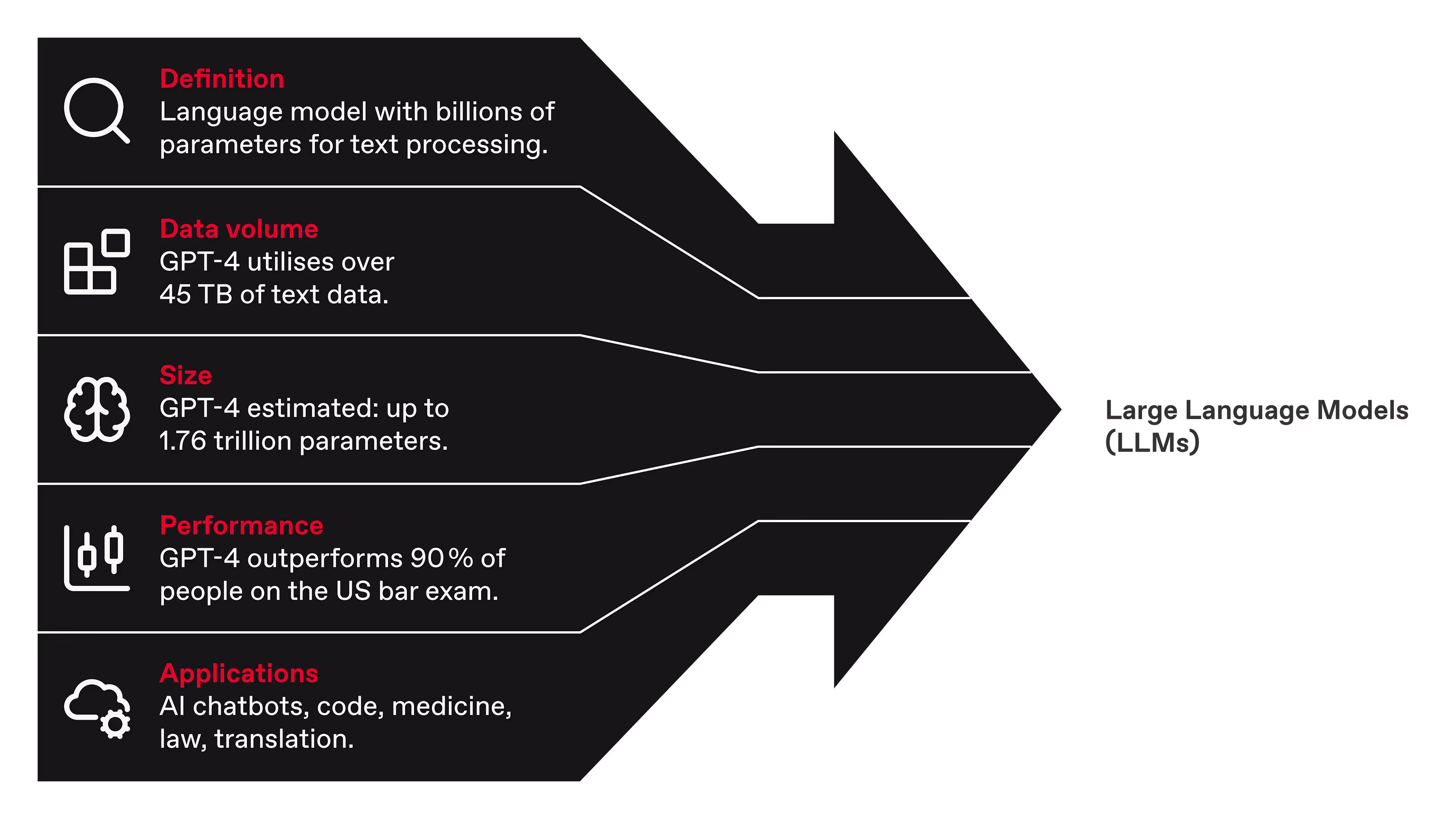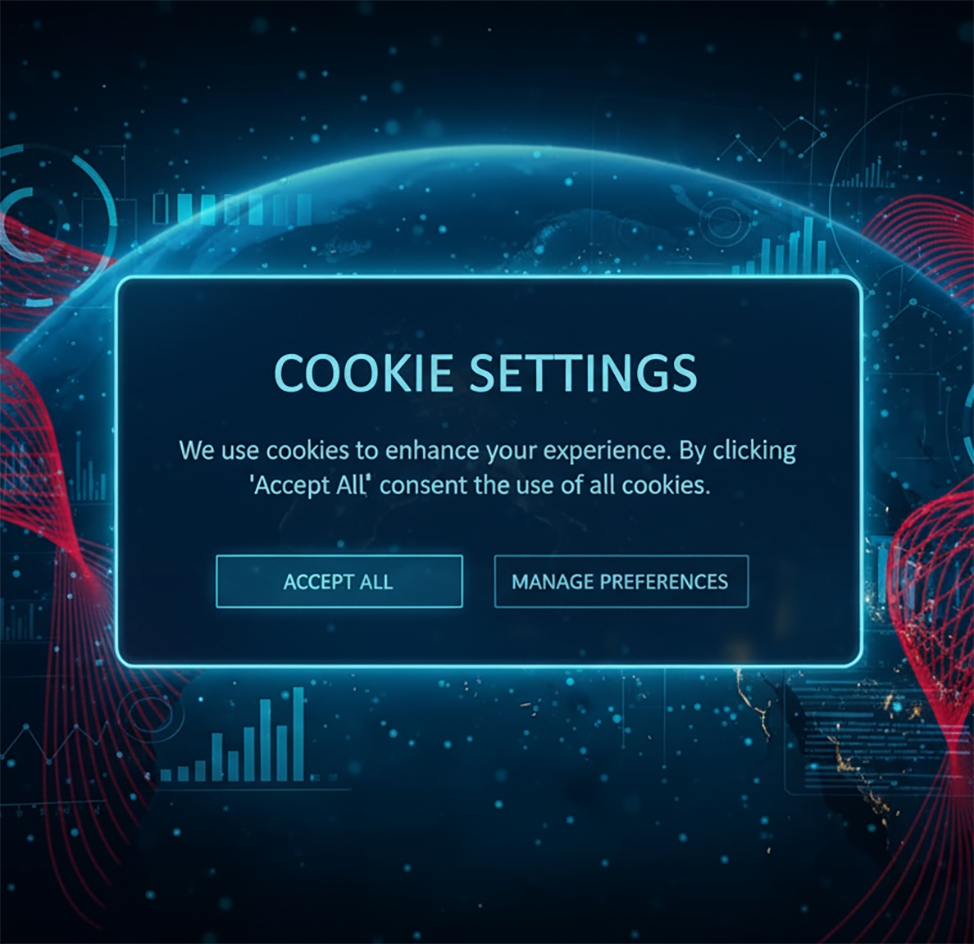Whether personalized advertising copy, scalable content production or smart campaign management — Large Language Models (LLMs) Have long been an integral part of modern marketing strategies and have become an integral part of the day-to-day work of many teams. They are the engine of a new marketing reality in which speed meets precision and data leads the way. But what is behind these models? How do they work, where are they used — and what should marketers really know?
What is an LLM — and why is it so relevant?
LLMs are AI-based language models that have been trained with billions of words to not only understand human language, but also to generate it independently. Whether blog posts, product texts or translations: LLMs deliver content in seconds that is often almost indistinguishable from human texts.
In Marketing, This Means Faster response times, more efficient communication and unprecedented scalability. Above all, LLMs enable highly personalized content that can be dynamically adapted to target groups, funnel stages or seasonal campaigns — automated, data-based and scalable at any time.
What makes LLMs particularly powerful is their ability to recognize semantic relationships — in other words, to 'understand' how terms relate to each other in context. And they can do this across different languages, sectors and topics.

How do LLMs work?
The technological basis of modern LLMs is the so-called Transformer architecture, which was introduced by Google in 2017. It allows models to analyze entire sections of text in parallel, using Self-attention mechanisms to recognize and weight-relevant contexts of meaning.
Words are visualised as mathematical vectors — so-called embeddings — That represent nuances of meaning in the language space. The models learn on the basis of huge amounts of text in Self-monitored training. In doing so, they recognize statistical patterns, develop an understanding of language and continuously improve the quality of results through Reinforcement Learning with Human Feedback (RLHF).
The training processes are extremely computationally intensive. They run for weeks on supercomputers with GPU or TPU clusters, process billions of documents and require huge amounts of energy — an aspect that is increasingly being discussed from a sustainability perspective.
Behind the scenes technologies
- Transformer architecture: Parallel context analysis instead of sequential processing
- Self-attention: Relevant relationships between words are recognized and weighted
- Embeddings: The meaning of words is captured mathematicallyt
- RLHF: Human Feedback Improves the Quality of Results
- GPU/TPU training: High computing power enables scaling
Where are LLMs used?
1. Performance marketing
At hurra.com, we use LLMs to dynamically create Ad texts, snippets or landing pages. In doing so, we combine machine efficiency with human control. This results in content that both contributes to the brand and performs.
- SEO & SEA: dynamic snippets, keyword-specific metas
- Content variation: automated A/B testing, funnel-optimized messages
- Personalization: individually tailored content based on user behavior
2. Market Research & Analysis
LLM's analysis of feedback, reviews and search queries — and identify patterns, moods and trends. This creates well-founded insights that make campaigns more efficient and relevant.
3. Education & Training
Whether in the form of intelligent tutor systems or automated teaching materials — LLMs make knowledge transfer personalized and scalable. Learning content adapts to the user's level of knowledge and automated corrections take the pressure off teachers.
4. Customer service & support
LLM-supported chatbots offer 24/7 support, understand even complex issues in context and are constantly learning. This saves costs and increases customer satisfaction.
Benefits at a glance
- Scalability: Content production at the touch of a button, around the clock
- Productivity: Hours become minutes
- Linguistic diversity: Multilingual output for global target groups
- Brand consistency: Uniform tonality across all channels
- Data intelligence: Content is optimised based on real user interactions
But there are also challenges
LLMs are powerful — but not infallible. Their use also entails new risks:
- Hallucinations: Models invent plausible-sounding but false facts
- Bias & Discrimination: Prejudices in training data are adopted
- Data Protection: GDPR-compliant implementation is mandatory
- Black Box: Decisions are often not transparent
- Use of resources: Training and operation consume a lot of energy
Comparing LLMs
The future: What can we expect?
LLMs are evolving rapidly. The Trends Clearly Show That the Future Is multimodal, hyper-personalized and scalable.
- Multimodal models: Text, Image, Audio and Video in a Unified Logic
- Virtual assistants: Customised, adaptive, context-sensitive
- Gamified learning: Language processing meets motivation and interactivity
- democratization: Open Source Makes AI Accessible to All
- Real-Time Fact Checking: Control and transparency of generated content
- Integration into business systems: From CRM to automated dashboards
Conclusion: More than just a tool — a real performance booster
LLMs are not a gimmick — they change the way we work. Used correctly, they increase efficiency, quality and creativity in marketing. At hurra.com, LLM-based processes have long been part of our daily business: from dynamically generated ads and snippets to data-driven campaign optimization and the analysis of cross-channel synergies. We specifically integrate LLMs into our own systems such as OwaPro, automate smart workflows and continuously test new fields of application.
The many successfully implemented use cases from customer projects show this: Those who not only utilise LLMs, but also think ahead strategically, create real competitive advantages. That's why we at hurra.com see ourselves not just as users, but as Active Pioneers for AI-supported marketing — with a clear goal: More relevance. More scaling. More impact.
Ready for marketing that thinks? Let's redefine your content strategy.
If you have the feeling that your current content approach is not realising its potential — and you want to know how you can position your company in LLMs in a meaningful, sustainable and measurable way right from the start, then get in touch with us.
👉 Book Your Appointment with Us — and find out how your company can take the next step with smart, scalable content.





